Some of the links in this post may be affiliate links.
Since I have so many houseplants, I resisted getting any new ones for a while even though I’ve always admired Oxalis triangularis, or the Purple Shamrock Plant. One day I was shopping for my summer annual plants at a nursery, and they had a display of these plants and I told myself that I would just grow them as annuals.
Who am I kidding? These plants flourished in a pot outdoors, but then I firmly decided to bring it back indoors to enjoy as a houseplant! Do you want to know how to grow Oxalis triangularis indoors, or even outdoors? Keep reading and I will fill you in on all the details!
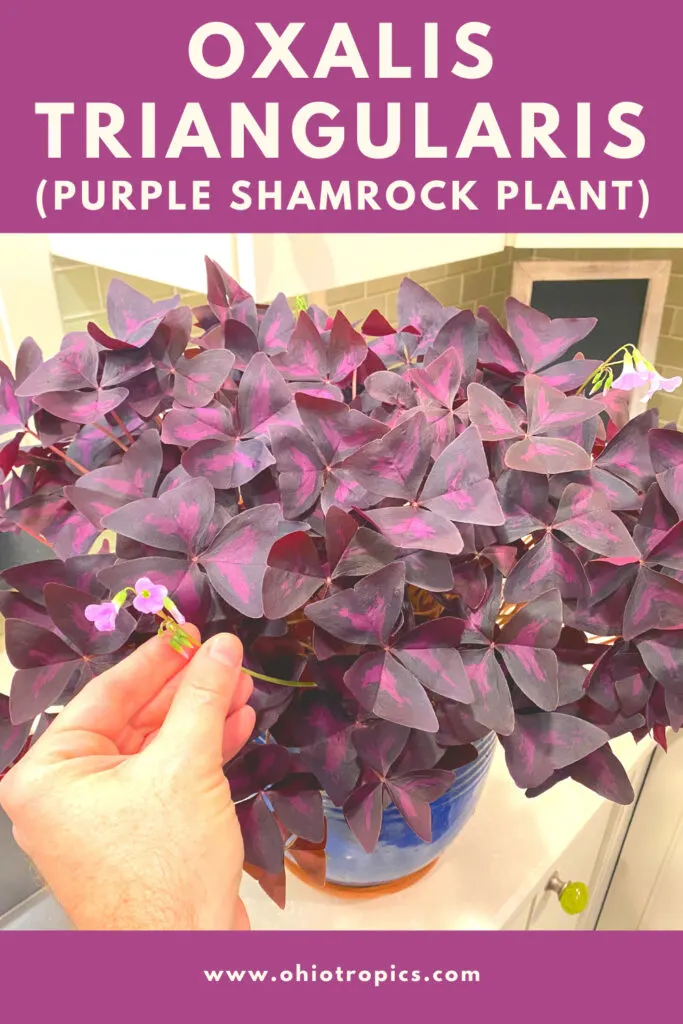
Table of Contents
Oxalis Triangularis Care
Before I get into the care of potted Oxalis triangularis, here is some interesting information that would be good to know. (If you don’t care you can move onto the next section but I promise this is interesting information!)
You’ll sometimes see this plant called False Shamrock Plant. Why is it a “false” shamrock? If you are familiar with clover, you’ll know that the leaves strongly resemble clover which is in the Trifolium genus. “False Shamrock” plant actually belongs to the Oxalis genus.
Oxalis triangularis belongs to the Oxalidaceae family, or the wood sorrel family.
This plant’s foliage consists of trifoliate leaves (compound leaf with 3 leaflets). Depending on the variety you have, the triangular leaves can be the plain green type, or they also come with dark purple leaves like my own plant.
Depending on the type you have, the small trumpet shaped five-petaled flowers come in different colors. My own plant has lavender or purple flowers, but there are other types that have white flowers and even yellow flowers.
These plants are native to a few countries in South America, including Brazil, but did you know that Oxalis triangularis is actually hardy in zones 6-11?
If you live in these zones, Oxalis triangularis makes for a lovely perennial plant that will keep spreading and add plenty of interest to your garden.
I’ve never tried growing these as a perennial, but know that it can be possible depending on where you live! If you live in a marginally hardy zone for this plant, be sure not to miss my Pushing Your Hardiness Zone blog post to ensure your chances of success!
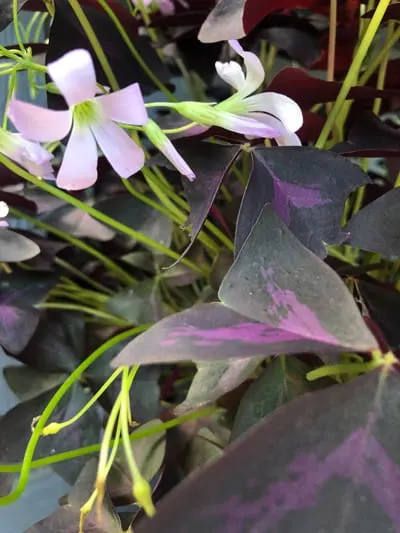
One intriguing part of this plant is its ability to close its leaves (and flowers) at night and open them back up during the day, making it the subject of some wonderful time-lapse videos.
This phenomenon is called photonasty behavior. Funny word right? Check out the cool video on Wikipedia where you can see the Oxalis triangularis photonasty behavior. (I chuckle every time I see the word photonasty).
Oxalis triangularis actually grow from tubers and these plants do have a dormancy period, so if you think your plant is suddenly dying, you are probably OK and I describe what to do later in this post.
Lastly, the leaves are edible, so you can sprinkle some of the beautiful leaves as garnish if you’d like…but don’t eat too much because they contain a lot of oxalic acid.
Oxalic means sour, and it is sour because of the high oxalic acid content. A little won’t hurt you at all, but too much will deter your body from absorbing calcium.
Just don’t go eating full salads of these plants. A little garnish will do no harm though 🙂
These plants are incredibly long lived and there have been reports of families having these plants for over 100 years. Talk about heirloom houseplants!
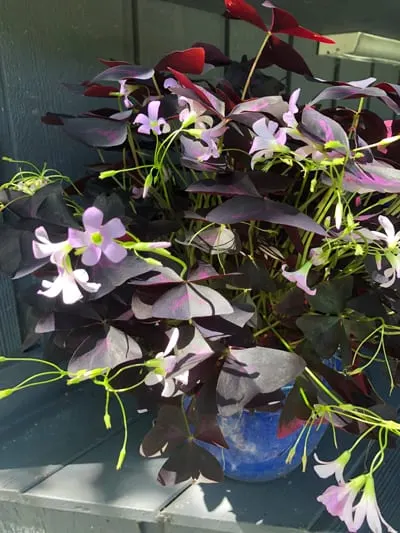
HOW DO YOU CARE FOR AN OXALIS PLANT INDOORS?
Let me go through some basic care information and growing conditions, and I will later describe how to plant the corms if you chose to purchase corms instead.
LIGHT
Light levels for this plant is a very important topic to consider indoors.
Indoors, you’ll want to give these plants some direct sunlight. Depending on where you live and how strong the sun and light is, you may want to give this plant at least half a day’s sun.
Is your Oxalis triangularis leggy or sparse? If it is, chances are that it is not receiving enough light.
I find that only indirect light indoors is not sufficient in many cases. Your plant will still grow, but not as full.
Move your plant to a sunnier location, with at least partial sun if you can, and it will respond by producing lusher growth and turn into a fuller plant. You should have this plant right in front of a window for best results.
These plants can even take full sun indoors, as long as you can keep up with watering because it will dry out much more quickly with bright light.
A few words about taking your plant outdoors. Although these plant do like some direct sunlight, please be careful when you place any of your houseplant outdoors. You can NOT move a plant that has been indoors immediately outdoors into direct sun.
If you do this, your plants will burn. Even the ones that like a lot of sun. To make the transition from indoors to outdoors safely, you’ll need to make sure to harden your plants off.
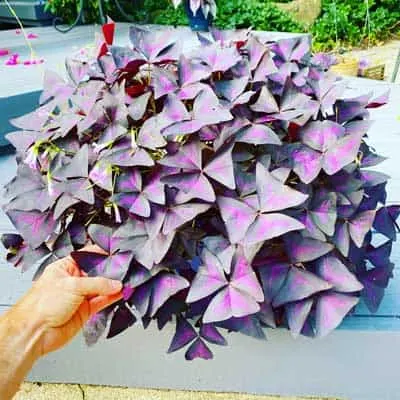
This means that you will gradually acclimate your plants to brighter outdoor conditions so that the leaves don’t burn. If you’d like to know more information on how to do this, please read my blog post on how to harden off indoor plants and place them outdoors safely.
You will be glad you read this. I’d had so many people tell me that taking plants outdoors is really bad because they burn and die. This is because those plants were not hardened off.
So be sure to not skip this step and read that blog post I referenced above!
WATERING
This plant likes slightly moist conditions, but do allow the top inch of soil or two (2.5-5cm), depending on the size of your pot, to dry out before watering again.
When you do water, make sure you give your Oxalis triangularis plant a good soak and allow excess water to escape the drainage hole.
Good drainage is very important so always use pots with drainage holes! Having no drainage holes is an invitation for root rot and we don’t want that.
Avoid letting these go totally dry especially for long period of time or you may induce a dormancy period. The dormancy period will occur anyway, but more about that later.
Avoid keeping these constantly wet indoors though may cause the corms to rot, and then you can say bye bye to your Oxalis.
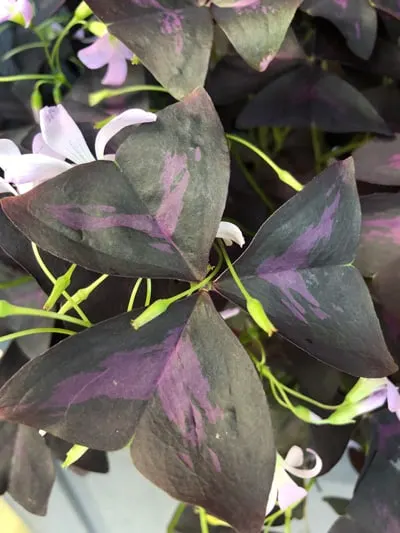
FERTILIZING
During active growth, I like to fertilize dilutely with every watering. My favorite fertilize that I’ve switched to for pretty much all my houseplants is Dyna-Gro Grow (link to Amazon).
I add 1/4 teaspoon of Dyna-Gro Grow per gallon of water and use it just about every time I water all my plants.
I love using it because it is urea-free and it contains ALL of the macro and micro nutrients that plants need. If you pick only one fertilizer to use for your indoor plants, you can use this one for all of them and with great results! I’ve been so happy with the results I’ve been able to achieve with this fertilizer.
TEMPERATURE
These plants do prefer temperatures on the cooler end. An ideal temperature range for oxalis plants is 60-75F (16-24C).
Consistent temperatures of over 80F (27C) can cause the plant to shut down and start to go dormant.
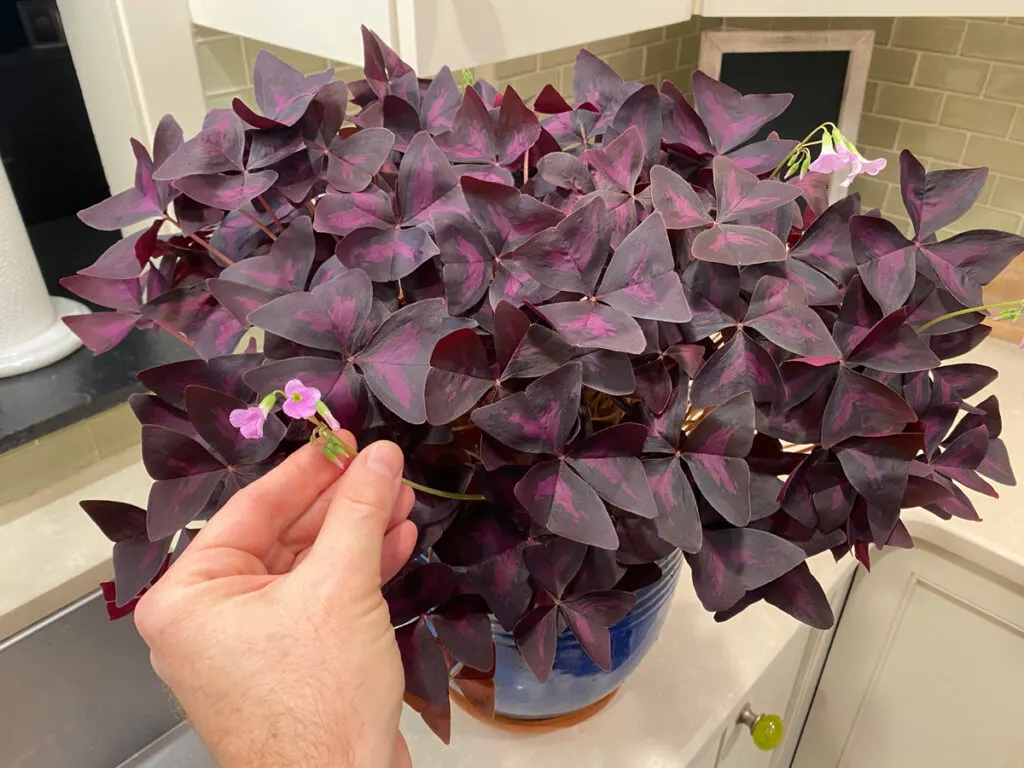
I like to bring my plant outdoors in the Spring once temperatures are warm enough. I keep my plant outside until about October or even November. At that point, I place it in a cool, dark place and stop watering. This will force it into dormancy.
Over the next few weeks, it will go into dormancy and all the leaves will dry up. Keep an eye on it because it may start to come into growth again after a few weeks. If you notice it start to grow again, immediately place it in front of a window so it can resume growing.
Here is my plant after it started growing back after dormancy:
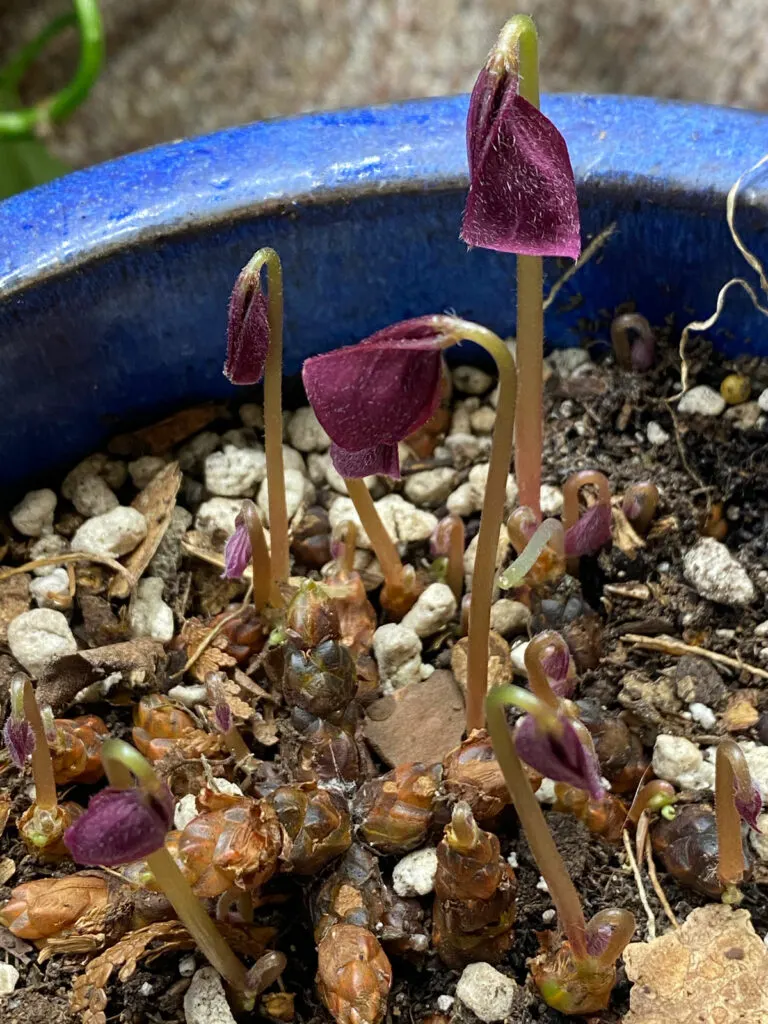
If you don’t notice any growth yet after about 4-6 weeks or so, don’t worry. Clean up the dead leaves, place it in front of a bright window, and starting watering and watch for signs of new growth.
With good conditions indoors, new leaves will start growing remarkably fast.
SOIL
For this plant, I like to use 3 parts of an all-purpose potting mix and 1 part perlite. This is my standard mix that I like to use for many plants.
Why is My Oxalis Dying?
If your Oxalis triangularis starts to look a little rough, despite nothing changing in its care, it may simply be entering its dormancy period on its own.
It is not dying, so you should not worry! Think of it as a chance to rejuvenate your plant. The dormancy period is normal so you’ll just have to get used to it.
Sometime after the main growing season each year, your Oxalis may start to look a little droopy. The leaves may stop opening up during the daytime.
At this point, it is time to give your triangularis a rest. I would recommend to stop watering at this point and let the leaves completely dry up. Then cut the leaves off and place it in a cool, dark location (above freezing) and let it rest for 3-4 weeks, or even up to 6 weeks. Do not water during this time period.
At the end of the dormancy period, bring your plant out of hibernation and back to a sunny indoor window, and start watering lightly. When you see signs of growth, you can water a bit more. Until you see new growth though, don’t add too much water.
Keep it on the drier side until growth starts to pick up, but don’t ignore watering.
Or if you’d like to make more plants, this is also a good time to divide the tubers and make as many new pots as you’d like. After the dormancy period, you can divide your tubers to your liking.
Or if you’d just like a specimen plant, keep things as is, or maybe pot it up to the next larger pot size.

PESTS & DISEASES
Pests and diseases are always a nuisance. The beautiful part about your Oxalis triangularis plant is that if your plant is infested with any bugs or diseases, if you don’t want to treat your plant, you can always let it go dormant and start growing fresh foliage from scratch!
Otherwise, read below on some tips to treat your plant.
SPIDER MITES
Spider mites are a nuisance and like any pests, are best dealt with before the problem gets out of control.
Spider mites themselves are very small, but you’ll be able to see very fine webbing on the foliage and they often hide underneath the foliage as well.
Check out my blog post on treating spider mites for more information.
MEALY BUGS
Mealybugs are another annoying pest. They will appear as white, cottony masses (and they contrast nicely against the rich purple leaves!)
I like to use an insecticidal soap to treat mealy bugs. Check out my post on treating mealybugs in order to have the best success at eradicating these annoying pests.
POWDERY MILDEW
Powdery mildew is a fungal disease that appears as hazy white areas on your leaves. It typically forms on dry foliage when your light conditions are low and it is very humid and temperatures are on the cool end.
Poor air circulation can also aggravate the issue.
Use an organic fungicide to treat your plant. Some people also have success with mixing a tablespoon of baking soda and 1/2 teaspoon of dish soap to one gallon of water and spraying on the plant.
THRIPS
Thrips are an exceedingly irritating pest to deal with. Fortunately, it is easier to manage thrips with Oxalis triangularis compared to other plants.
Why? Because you can let it go dormant, like I outlined in the previous section. You’re essentially able to set the reset button very easily.
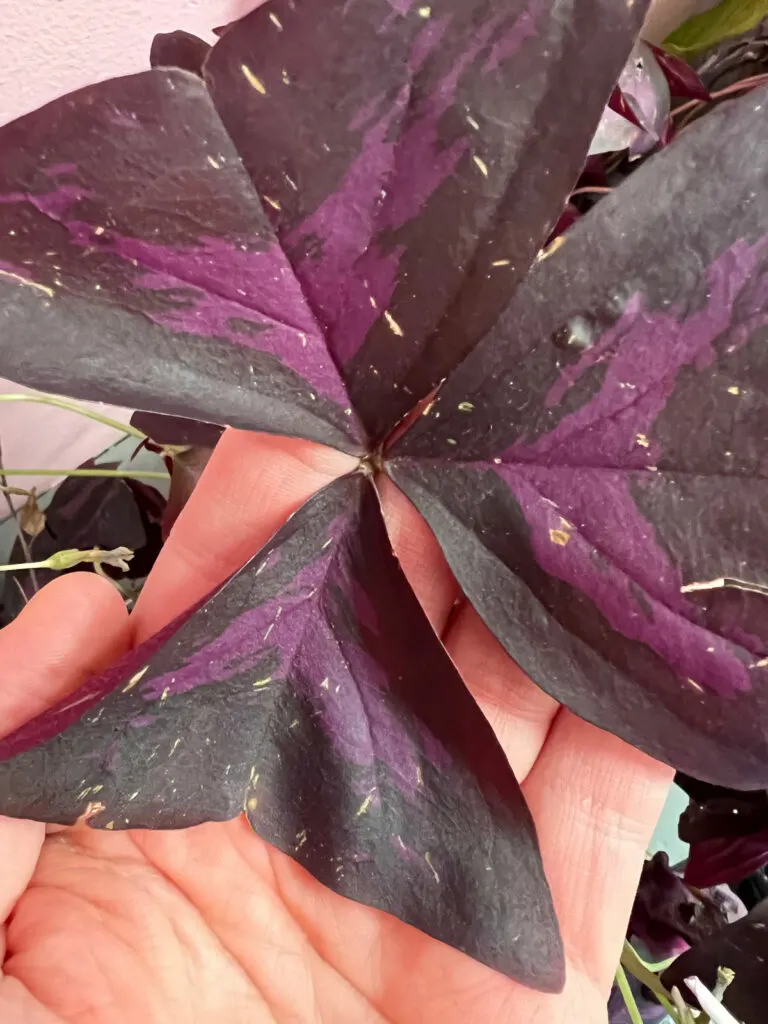
You can attempt to spray with
And unless you’re able to effectively spray the entire plant, it’s almost not worth doing.
Instead, I recommend following this procedure to eradicate thrips in your Oxalis:
- Isolate your plant and allow it to go dormant by withholding water and allowing all the foliage to die off, as previously described above.
- Once the foliage has all dried up, discard the dead foliage.
- Apply a systemic insecticide to the soil. This will kill off any thrips nymphs that have fallen onto the soil. I like Bonide Systemic Houseplant Insect Control.
- Resume regular care, watering, etc.
For more details on thrips, check out my blog post that details how to treat thrips on houseplants.
HOW TO GROW OXALIS TRIANGULARIS FROM CORMS
If you don’t obtain an actual plant, you can simply order corms and pot them up to grow your own plants. It is very simple, convenient, and easy to do!
I actually purchased my own plant in the annuals section of a nursery, so I started out with a plant in a 4 inch pot:
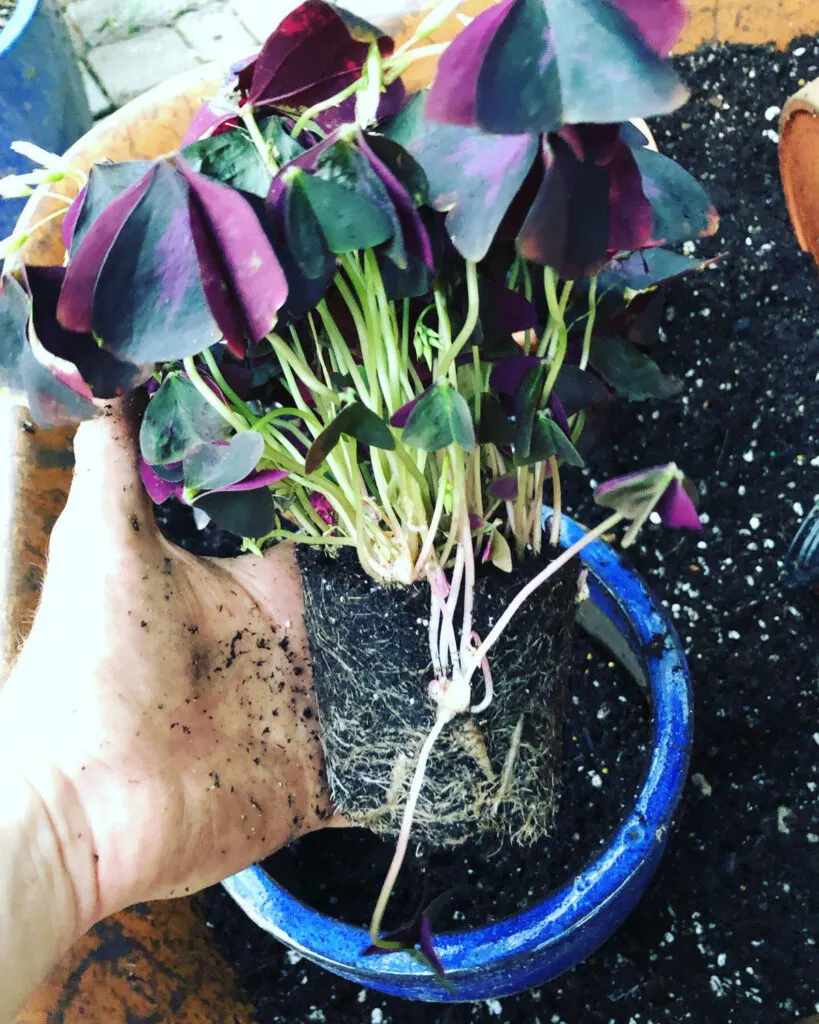
Simply pot up your tubers about 1 to 1 1/2 inches (2.5 to 4cm) apart and also 1 to 1 1/2 inches deep. Don’t space your tubers too far apart otherwise you won’t have a full plant.
Plant the tubers vertically with the narrower end at the bottom. They will still grow regardless, but this is what I prefer doing.
Water lightly and place in a sunny window. You should have new growth within about 2 weeks or so. These are great plants for the impatient gardener because they do grow pretty quickly and it is fun to watch the progress!
For a very detailed post on how to plant corms, and also how to divide an existing plant, step-by-step with photos, check out my blog post: How to Plant Oxalis Bulbs (Corms).

OXALIS TOXICITY
Oxalis is toxic to cats and dogs because of calcium oxalate according to the ASPCA.
That’s about it folks! I hope you’ve enjoyed this blog post and that you’ve taken some useful tips. Do you have any Oxalis triangularis? Comment below! I love to hear from my readers.

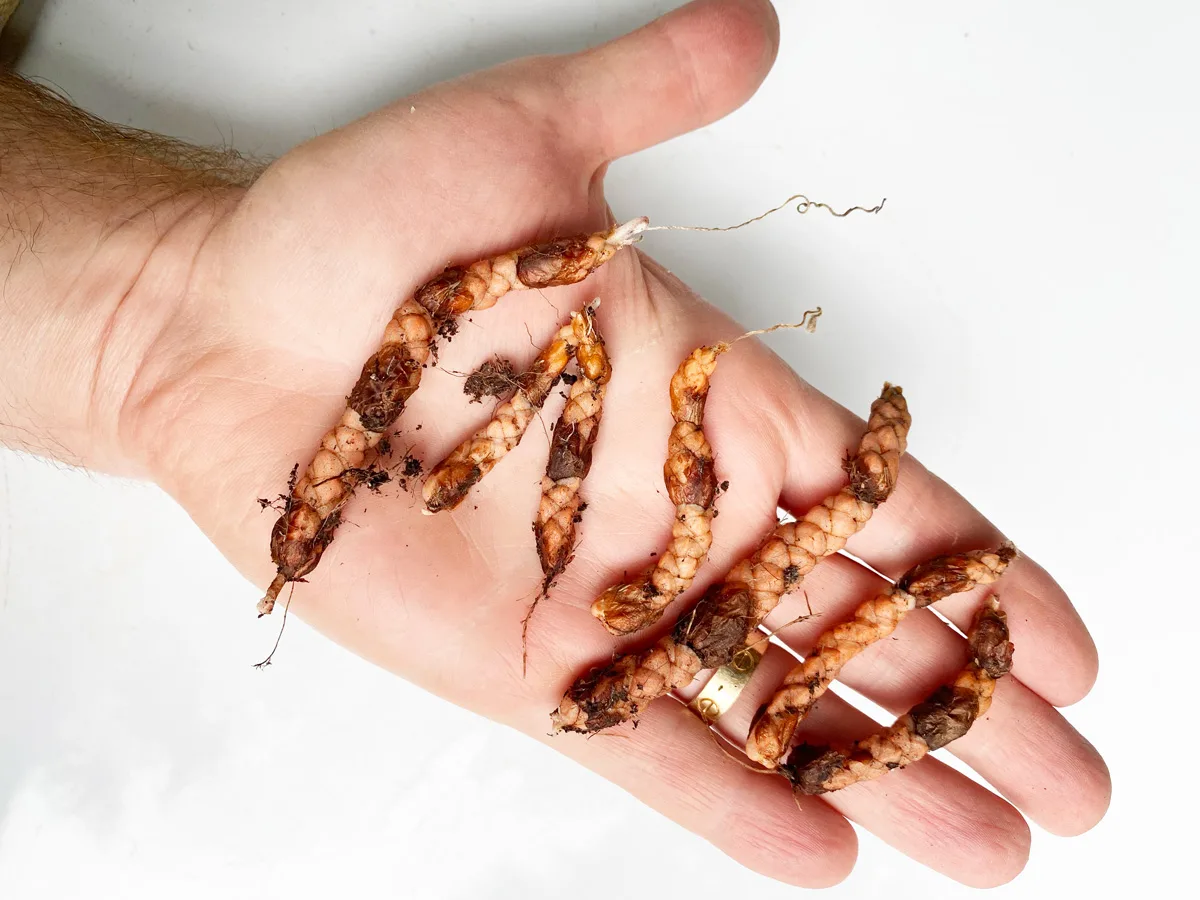
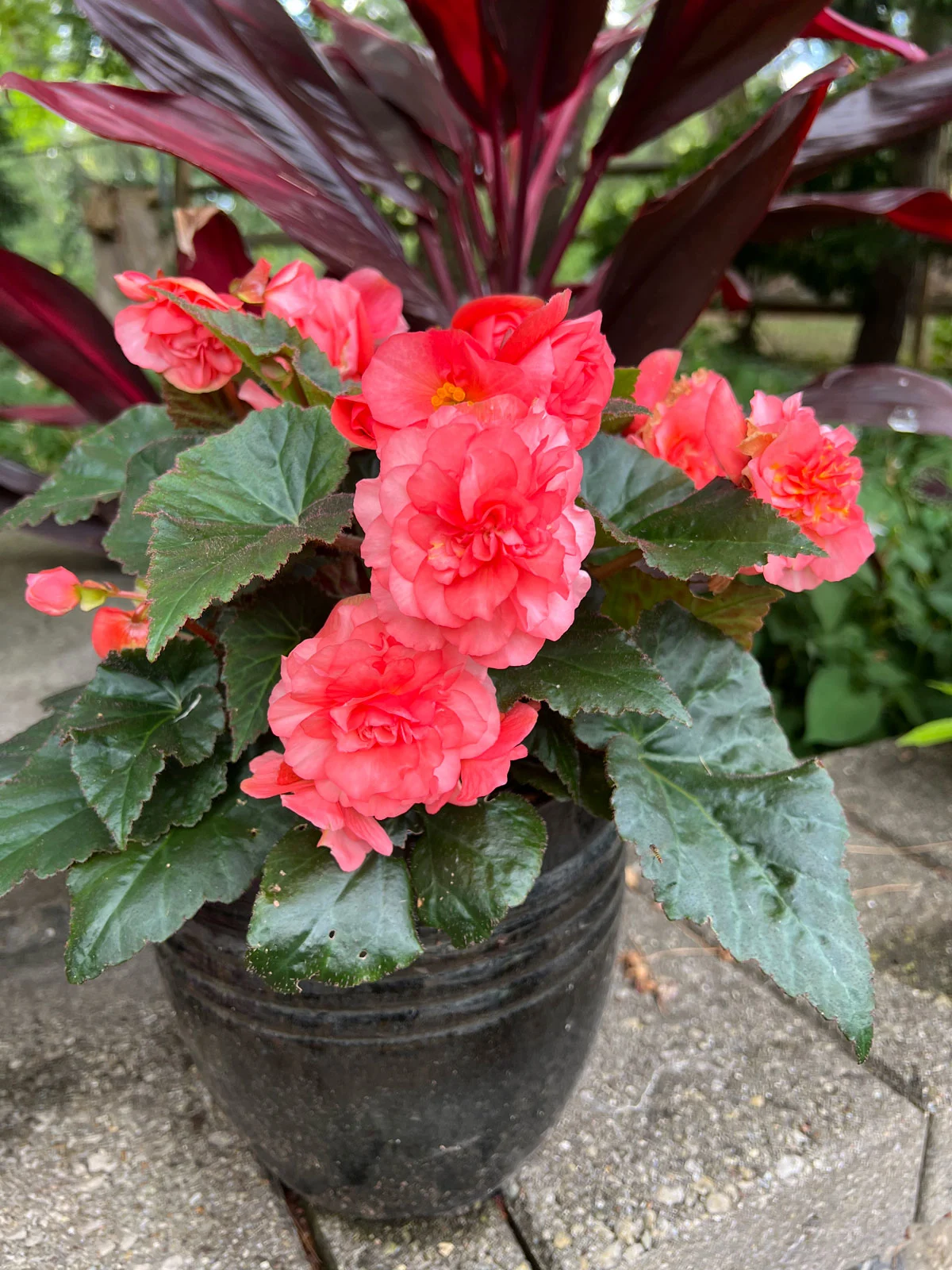
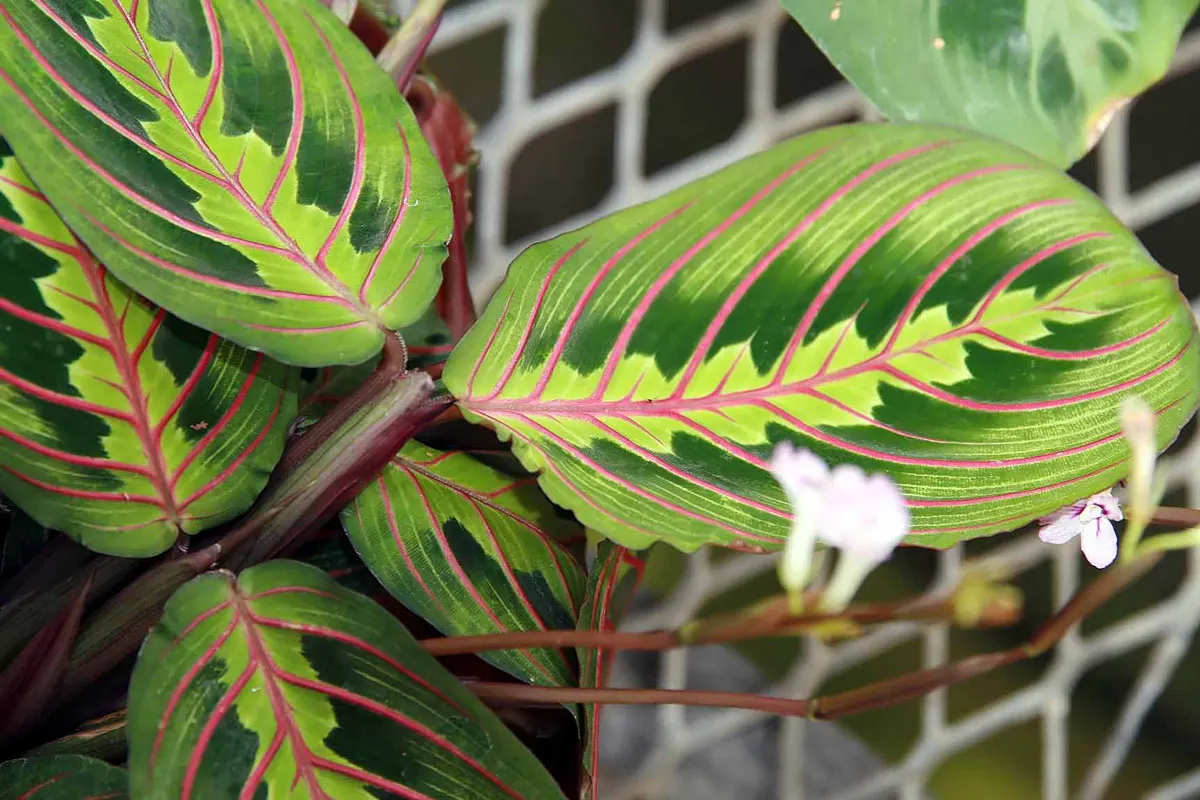
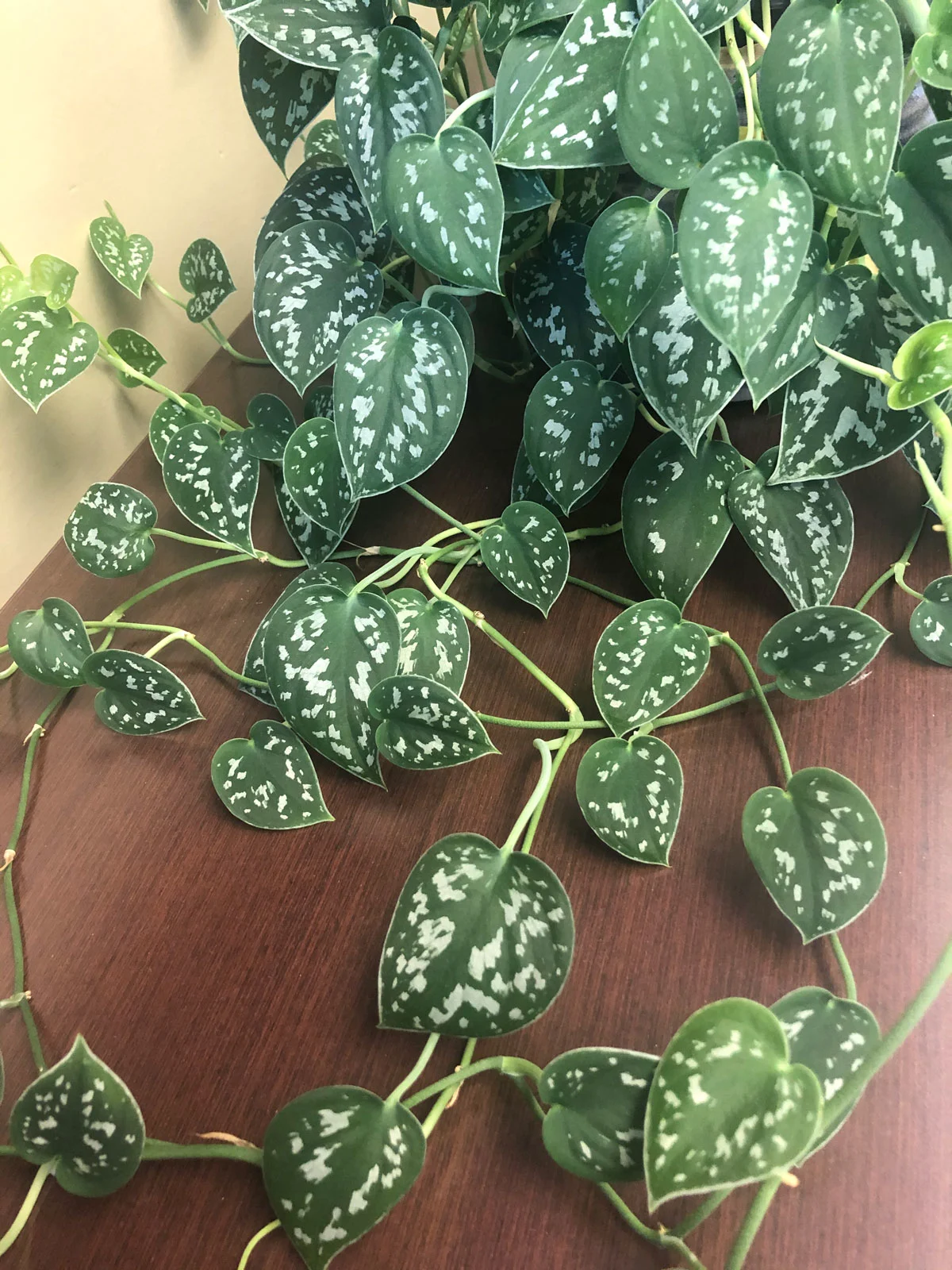

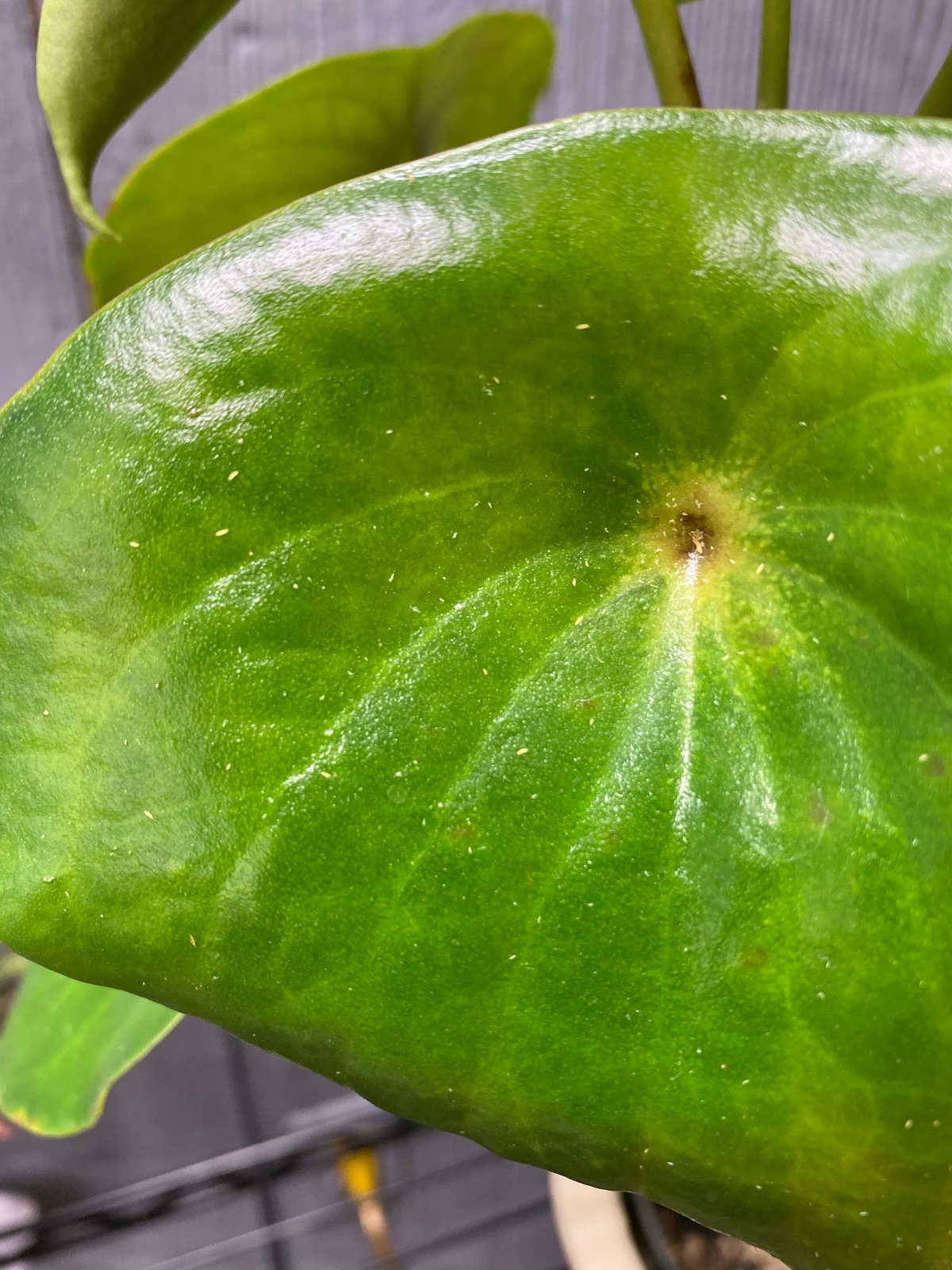
Yve
Tuesday 9th of January 2024
Hi, I have 3 pinky lilac ones that I have grown from corms, and I recently repotted them. 2 are fine but 1 is drooping and the leaves are not opening during the day. I am wondering if I accidentally damaged it. Do you think it will just go dormant and regrow? The yellow flowered ones grow along the verges here in the UK, wondering if I put 1 of each in a pot together I might eventually get a hybrid, what do you think?
Raffaele
Wednesday 10th of January 2024
I wouldn't worry too much. Just give it regular care and it will eventually fill the pot! As far as the hybrids, it wouldn't happen just by planting two kinds in one pot. The flowers would have to be cross-pollinated manually and then you'd have to plant the seed. Hope this helps a bit!
Winsome Hoo
Saturday 3rd of December 2022
This is the best information I have ever read online about Oxalis. I learned so much from the information on this site. I liked the information on the fertilizer Dyna-Gro and will definitely be using that from now on. I would be happy to get any information from you from time to time. Thank you very much for this. The shamrock is one of my favorite plants and I would like to get more purple varieties beside triangularis
Raffaele
Monday 5th of December 2022
Glad you enjoyed the post!
Shy Nawab
Saturday 2nd of July 2022
Thankyou so much for such a detailed indepth article on the Oxalis
I have the Oxalis Triangularis which I have finally managed through a season to bloom & I got ambitious & planted a corm.of the Crispiflora Orange Oxalis which is showing buds now in Week 3.
I am in Bangalore, India so have to first figure out the hardiness zone to figure out if Oxalis can be a perennial here.
Tks again
Raffaele
Saturday 2nd of July 2022
Hello! I'm sure you will have absolutely no problem with where you are in terms of keeping Oxalis as a perennial where you live :-). What is the coldest it gets where you live?
Kim
Saturday 21st of May 2022
Hi - so glad to have found you! A friend gave me this plant yesterday, and it's got beautiful green/purple leaves - no flowers. I've been scouring information, and have seen some mixed info that's confusing! The plant has about 15 very leggy stalks with leaves, drooping over the side of the (plastic) pot. One thing I read said to let it go dormant in summer (we're in Zone 6b, though it rarely gets that cold in winter). I'm thinking it's because it's a new plant (she bought it at a craft show and gave it to me a week later), and probably needs sun? I'm not sure if I should cut those leggy stems back, but keep it in light/water, let it go dormant, or just put it in the right light and see what happens? Thanks in advance for any advice - love your site!
Raffaele
Sunday 22nd of May 2022
Hi Kim! You can let it go dormant anytime you want. I've done it at various times of year, and it will be just fine! Glad you're enjoying my site :-). That being said, it's up to you whether you want to do it now, or just wait. You can try placing it in brighter light and it should continue to grow though and fill out, especially if you put it outside.
Marcia
Friday 20th of May 2022
When a few stems on my oxalis houseplant came loose in the soil, I put them in a vase of water. The flowers lasted for several months, and the stems rooted. I planted them, and the plant is beautiful. Amazing!
Raffaele
Friday 20th of May 2022
They're such resilient plants! Thanks for sharing :-)